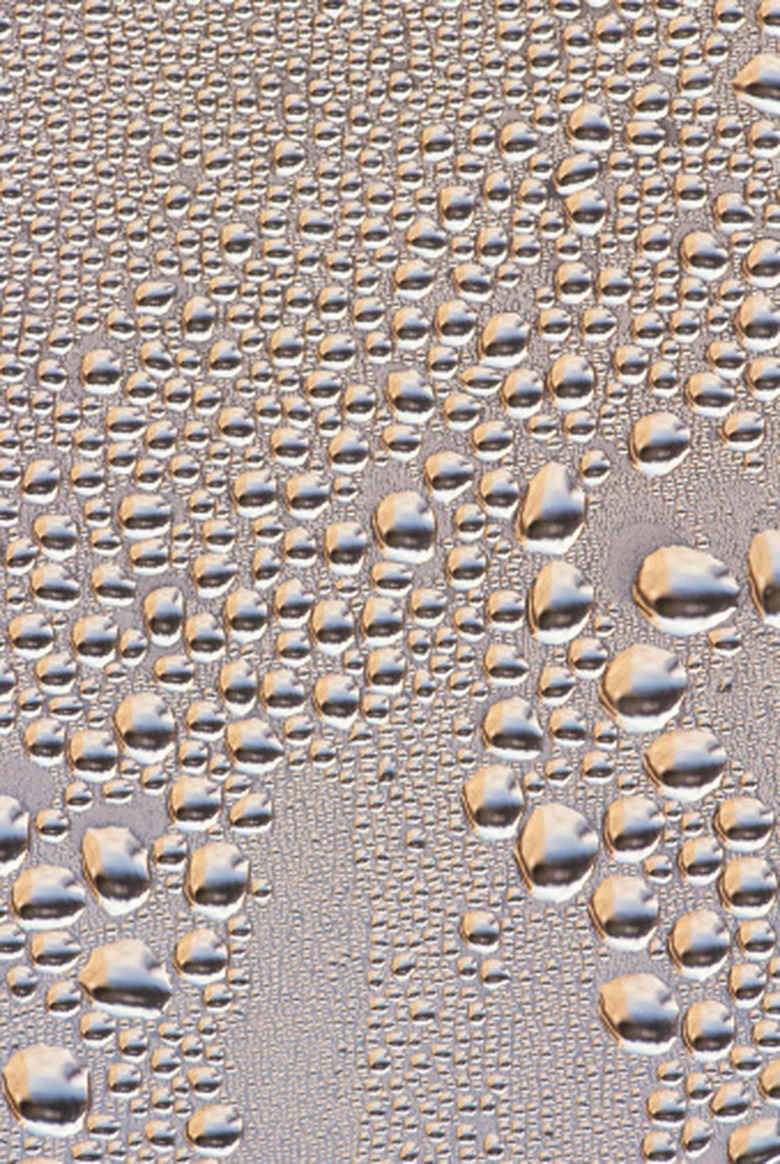The Differences Between Vaporization & Evaporation
Boiling water in a pot and water disappearing quickly from surfaces in the summer heat is due to vaporization and evaporation. Although both are phase transitions, the difference between vaporization and evaporation has to do with the temperature at which the phase change takes place.
Distinguish Between Vaporization and Evaporation
Distinguish Between Vaporization
and Evaporation
Consider these definitions to distinguish between vaporization and evaporation.
Vaporization is the transitional phase of an element as it changes from a liquid phase into a gas phase at a point greater than the boiling point.
Evaporation is the transition from the liquid phase to the gas phase that takes place below the boiling temperature.
States and Phases of Matter
States and Phases of Matter
Transformation between the liquid, solid and gas states of matter occurs without changing the chemical composition of the substance.
Consider the flow diagram below of how the states of matter phase into each other; the processes by which this happens are named:
Solid → in melting turns to → liquid → in evaporation turns to → gas
The reverse is:
Gas → in condensation turns to → liquid → in freezing turns to → solid
Vaporization Process
Vaporization Process
The vaporization process is when an element changes from liquid to a vapor. The two types of vaporization are evaporation and boiling. Evaporation, then, is a type of vaporization.
Boiling is not listed in the above phase changes of matter. Boiling is a bulk phenomenon where vapor, in the form of bubbles, is formed beneath the surface of the liquid and not at the surface, as in evaporation.
As temperature increases, the kinetic energy of the particles increases. Some particles are able to break the intermolecular forces keeping them in liquid form, and they rise in their gaseous form and escape into the surroundings in the form of vapors.
Evaporation Process
Evaporation Process
Notice that in the above phase changes, evaporation is when a liquid turns to gas. The particles in the liquid form are gathering enough energy, in the form of heat from a stove or from the sun for example, to move from the loosely packed liquid form to the more energetic gaseous form. As the particles acquire more kinetic energy, they break the intermolecular forces within the liquid form.
Once some particles phase into gas, the remaining lower kinetic energy particles in the liquid have a drop in liquid temperature and an increase in evaporation rate. This process is known as evaporative cooling, and it is why the body tends to cool while sweating.
Difference in Phase Process
Difference in Phase Process
A slight difference between vaporization and evaporation exists as it turns into a gaseous form. With vaporization, all of the water can turn into gas. With evaporation, only the top level of water turns into a gas.
The liquid molecules that evaporate must be located at the surface of the water and have enough kinetic energy to evaporate.
Vaporization and Evaporation Under Differing Conditions
Vaporization and Evaporation
Under Differing Conditions
An increase in temperature, surface area or air movement will increase the rate of vaporization. As the pressure increases, however, it is more difficult for particles to gain kinetic energy and escape, and vaporization will decrease. Water at a lower elevation, where there is more pressure, takes longer to boil.
With heat, low humidity, quicker air movement and lower pressure, evaporation increases.
Vapor Pressure in Closed Systems
Vapor Pressure in Closed
Systems
In a closed system, such as a water bottle, water will evaporate, often touch the edges of the water bottle, then condense and fall back into the body of water. The vapor pressure, the pressure of the a vapor in contact with its liquid form, increases in the water bottle until the pressure reaches a certain point that discourages further evaporation.
If water is boiled in a pot, the vapor pressure can become strong enough that it can cause the closed system to burst open, such as the rattling or lifting of a pot lid.
Cite This Article
MLA
Kozlowski, Rosann. "The Differences Between Vaporization & Evaporation" sciencing.com, https://www.sciencing.com/differences-between-vaporization-evaporation-12052824/. 31 March 2020.
APA
Kozlowski, Rosann. (2020, March 31). The Differences Between Vaporization & Evaporation. sciencing.com. Retrieved from https://www.sciencing.com/differences-between-vaporization-evaporation-12052824/
Chicago
Kozlowski, Rosann. The Differences Between Vaporization & Evaporation last modified March 24, 2022. https://www.sciencing.com/differences-between-vaporization-evaporation-12052824/
